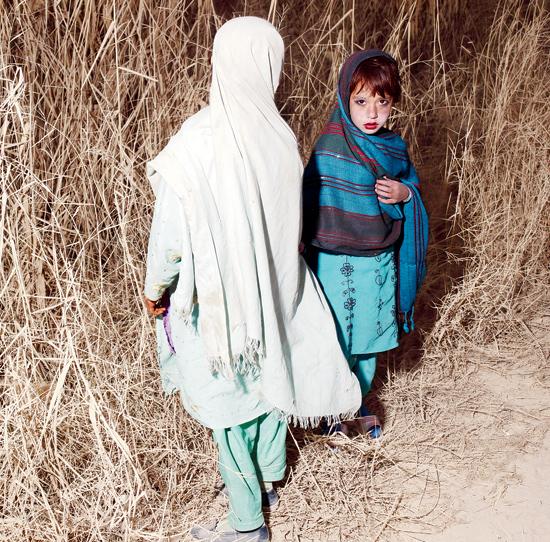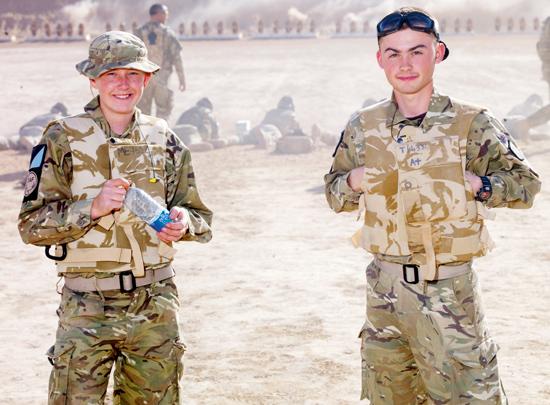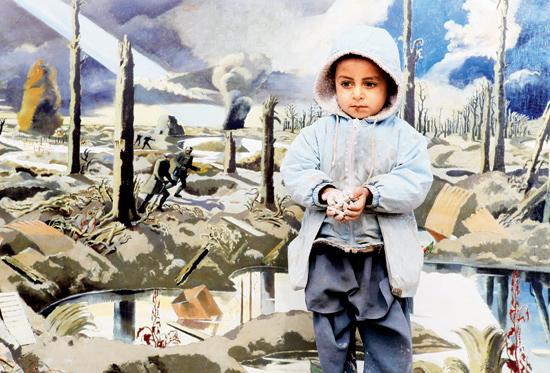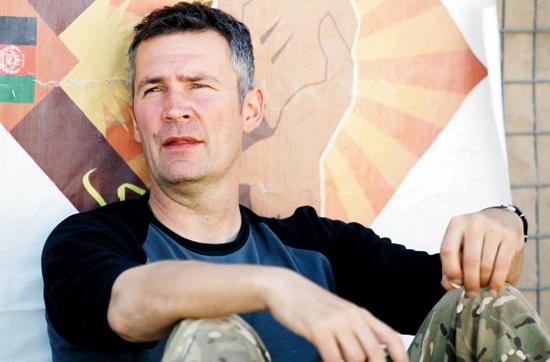The guide puts the spotlight on British artist, photographer, Mark Neville, who spent 2 months capturing the horrors of war, especially from the eyes of the young on both sides, in Helmand, Afghanistan

Mumbai Guide, Mark Neville, British war artist, photographer, First World War, Helmand, Afghanistan
Q. What art are you mainly into?
A. I work at the intersection of art and documentary. Through lens-based works, I explore the social function of art — how films and photographs can have an impact in the real world. The intent of my work is to be directly beneficial to the subject. Therefore, I constantly seek new ways to empower the subject, over the author.

Youth in Afghanistan. Pic Courtesy/Mark Neville
For instance, in 2004, I spent a year as an artist-in-residence at Port Glasgow. Port Glasgow was once a global shipbuilding centre, but now is a town facing economic decline. The result of my project was a beautiful coffee-table book, conceived as a symbolic gift to the community.
The book was uniquely delivered — free to 8,000 households in the port, by members of the local Boys Football Club. In this way, rather than having a public work imposed on them, the city folk received a document of their lives, and were both hosts and protagonists of the artistic experiment. The book is not available anywhere else. The idea was to get rid of the exploitation that occurs with the commercialisation of such art.
Q. Since you had never before worked as a war artist, how did Helmand come about? And what made you take it on?
A. In October 2010, I received an invitation to interview for a residency to work as a war artist in Helmand. The residency would be commissioned by an arts organisation, firstsite, in Colchester, Essex and Imperial War Museum’s Art Commissions Committee. It was to be hosted by 16 Air Assault Brigade, the largest regiment in the British Army.It had never occurred to me to make work in a war zone but when the invitation came, it suddenly seemed relevant to my life since my grandfather, Jack Neville, was a captain of a ship during WW2.

Young troops at the firing range in Helmand
His behaviour, when he came back from four years at sea, is what I now recognise as PTSD (Post Traumatic Stress Disorder). That had a profound effect on my family, determining key aspects of my life. I remember my grandfather as an aggressive character. He also took lots of photographs after he returned. His perspective on life seemed defined by the lens; he would either look down through the waist-level viewfinder of a box camera, or through a telescope that he had installed in his coastal home. He was always looking at the sea.
When he wasn’t looking through the lens, he was barking orders at the family. His inability to communicate in a pleasant way, coupled with the need to mediate life via a lens, impacted me and somehow led to my career choices. When the interview for the residency came about, I thought that my family history could allow me to bring a unique perspective on the conflict.
Q. Most of us cannot imagine a war zone. What were your initial days like in Helmand?
A. To get to Helmand, I had to make my way from Glasgow to Brize Norton, the air force base from which my flight left for Helmand. The army kit was horrendously heavy and made for a stressful domestic journey. Boarding this plane was different from the usual, with 300 passengers all of whom are men, in their 20s, wearing combat gear. The 16-hour flight was one of almost complete silence. There was a tangible sense of fear and foreboding. Nevertheless, I was intuitively aware that these people knew each other. I knew no one. I felt myself in alienation.

A production still from Neville’s film, Backdrops. Pics Courtesy/Mark Neville
Normally, when I start a project in a new community, I find it easy to connect with people, and this has been integral to the success of my projects. Here, initially, there didn’t seem to be any connection between me — an artist in his 40s — and these boys going to war. I felt self-conscious about my background, my purpose of going there, and my lack of physical prowess.
When we arrived at the base in Helmand, it was midnight. Only fluorescent lamps lit our way, from the tarmac to the arrival tents.
The troops then dispersed, but there was no one to meet me. I was at a loss as to what to do. I managed to find my heavy kit and walked off into the darkness. After stumbling in the pitch-dark for half an hour, I found a tent. One of the beds in the tent was empty. I climbed in and fell asleep but awoke at 5.30 am, covered in blood. I later learned that nosebleeds were common here. At daybreak I was able to locate the unit that hosted me in my initial days.
Q. Could you elaborate on the films that you shot in Helmand?
A. Before I left for Helmand, I had backdrops fabricated for my film, titled, Backdrops. These backdrops were photographic reproductions of paintings and photographs from previous Afghan Wars, WW1, and WW2. They were works of famed war artists like John Piper and Paul Nash, and photographer, John Burke. Their works served as artificial backdrops to the current ‘real’ action in Helmand.

Mark Neville in Helmand
I chose backgrounds, which contained a perspective that would work with the foreground, in theme and size. For instance, in one scene, I used a backdrop, which had Burke’s image of a child musician, while in the foreground local village children blew soap bubbles. The aim was to evoke an emotion, and make a connection between conflict, then and now; to question the many times we have gone to war. Has anything changed? The answer is obvious, and yet rarely translates to international policy. Through iconic backdrops, I also wanted viewers to examine how we are numbed to oversaturated images of war. Bolan Market is a silent, slow motion film.
Bolan Market, Lashkar Gah, had been described to me as a success story by the ISAF (International Security Assistance Force). Previously part of the Taliban-run territory, this area began to flourish following its occupation by ISAF. Cars, stalls, shoppers, spoke of the beginning of trade. Nevertheless, my film depicts a complex relationship between the locals and the armed forces. I shot this film from a Husky armoured vehicle.
While some of the local faces seemed warm, others were clearly uncomfortable, disturbed or angered. And that’s what I tried to bring out by the use of slow motion in my film. When I requested to film on the ground, amongst locals, I was told that there were Taliban sympathisers in the market and I would be ‘killed or kidnapped within 20 minutes’. How could I engage with the Afghan community in any meaningful way when my connection was made possible only through a machine of war? In Helmand, this desire to speak to locals, to make work, which gave them a voice, was utterly frustrated. Hence, I left the film mute.
Q. Would you ever return to a conflict zone?
A.The experience changed my life, and not for the better.
Log on to: www.markneville. com for more information
 Subscribe today by clicking the link and stay updated with the latest news!" Click here!
Subscribe today by clicking the link and stay updated with the latest news!" Click here!









